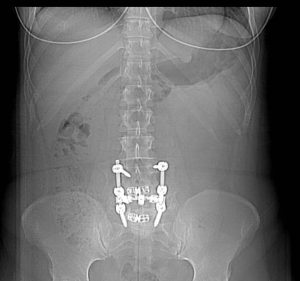23 Aug Spinal Fusion versus Artificial Disc Replacement
For patients who have suffered persistent back pain and has tried conservative therapy for at least six months, it can be frustrating as the pain can severely impact life and make it difficult to go through activities of daily living. More and more patients are experiencing back pain and for those who opt for surgery, it can be a scary and overwhelming decision. Artificial disc replacement is becoming increasingly popular and is an alternative to spinal fusion used to treat those with severe disc problems.
 Spinal fusion
Spinal fusion
To achieve pain relief, many patients undergo a procedure called spinal fusion. This is the traditional approach to achieve pain relief and involves fusing the affected vertebrae. By fusing the affected vertebrae, it prevents them from moving thus achieving pain relief. There are many techniques that help achieve spinal fusion such as a front or back approach.
The procedure is very similar to an artificial disc replacement surgery as the damaged disc is first removed and the empty disc space is then filled with bone material, metal, or plastic device. The healing process eventually locks and stabilizes the segment.
Artificial Disc Replacement
Artificial disc replacement is a newer procedure used for the treatment of a painful back due to a damaged disc. It is becoming a more popular technique and is frequently discussed as a treatment option. Artificial disc replacement helps achieve pain relief by removal of the painful disc and a prosthetic implant made of metal replaces the damaged disc. The motion of the spine is thus maintained.
Currently, spinal fusion is still the most prevalent surgery as the artificial disc replacement can only be used to treat limited types of disc pathology. It is most commonly used to treat patients who have a poor functioning intervertebral disc such as those with degenerative disc disease (DDD). DDD is a condition that can occur in the neck or lower back. This procedure cannot be used in patients with osteoporosis, spinal infection, fracture, or spinal tumor.
Benefits of an Artificial Disc Replacement include:
- Faster recovery as patients who retain motion heal faster and has less breakdown at the adjacent level. After surgery, patients can return to non-strenuous activities and in 12 weeks, patients can do anything they want. In patients who undergo spinal fusion, the recovery rate is slower.
- An artificial disc replacement lowers the concern if the healing will be out of equation. In spinal fusion, after surgery, patients receive a specific set of instructions regarding posture and limit of activity to ensure the spine fuses together well.
Artificial disc replacement is a newer technique that has been used in treating those with a damaged intervertebral disc. Although lumbar (lower back) disc replacement did not have many good outcomes, it has been attributed to utilization of treatment in non-ideal candidates. It was, however, successful in replacement if the cervical (neck) disc. A study comparing the artificial disc replacement and spinal fusion in patients with cervical degenerative disc disease found that those who undergo the artificial disc replacement had a faster recovery compared to patients who underwent a spinal fusion.




Sorry, the comment form is closed at this time.